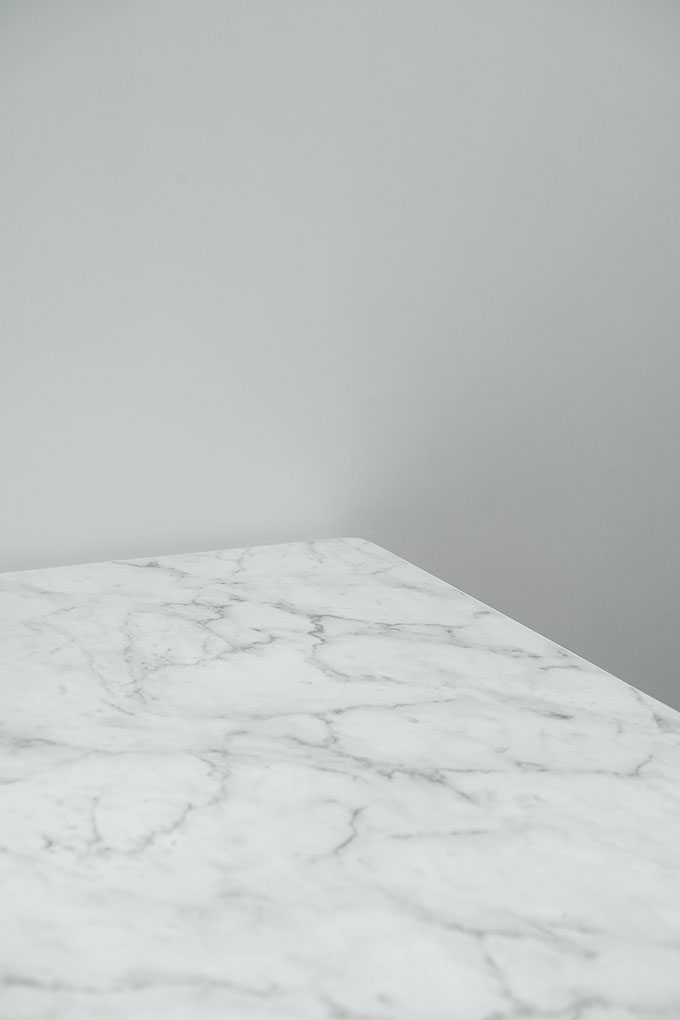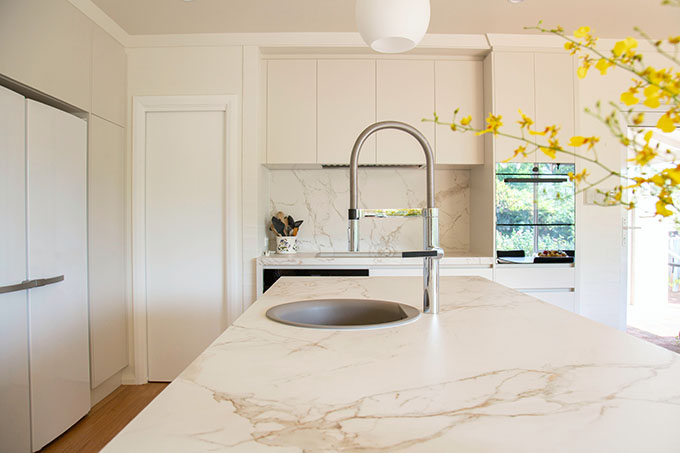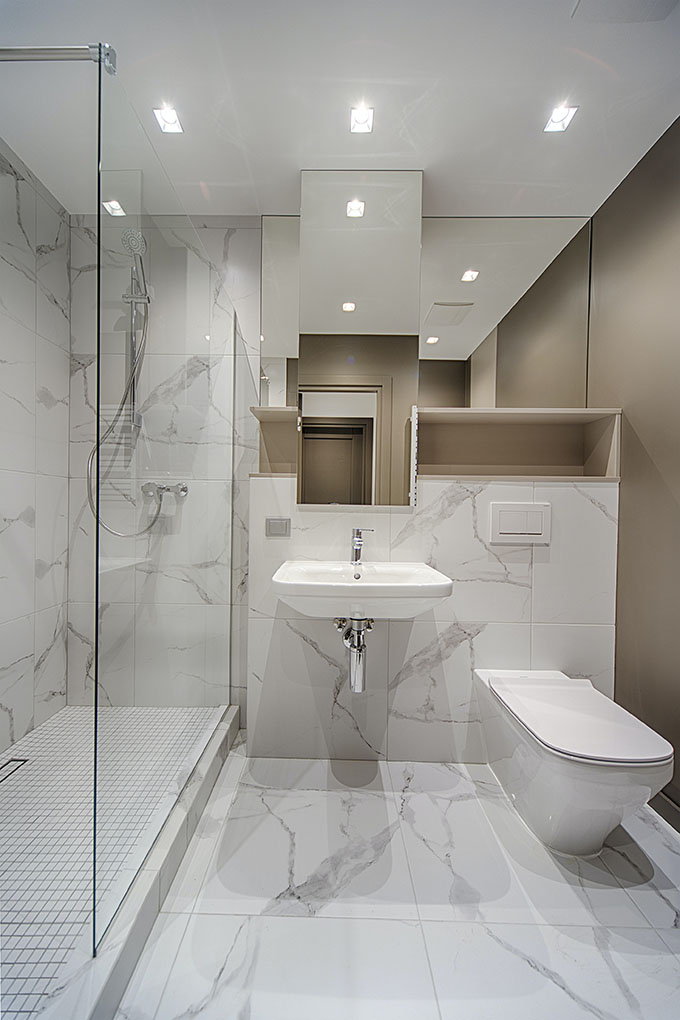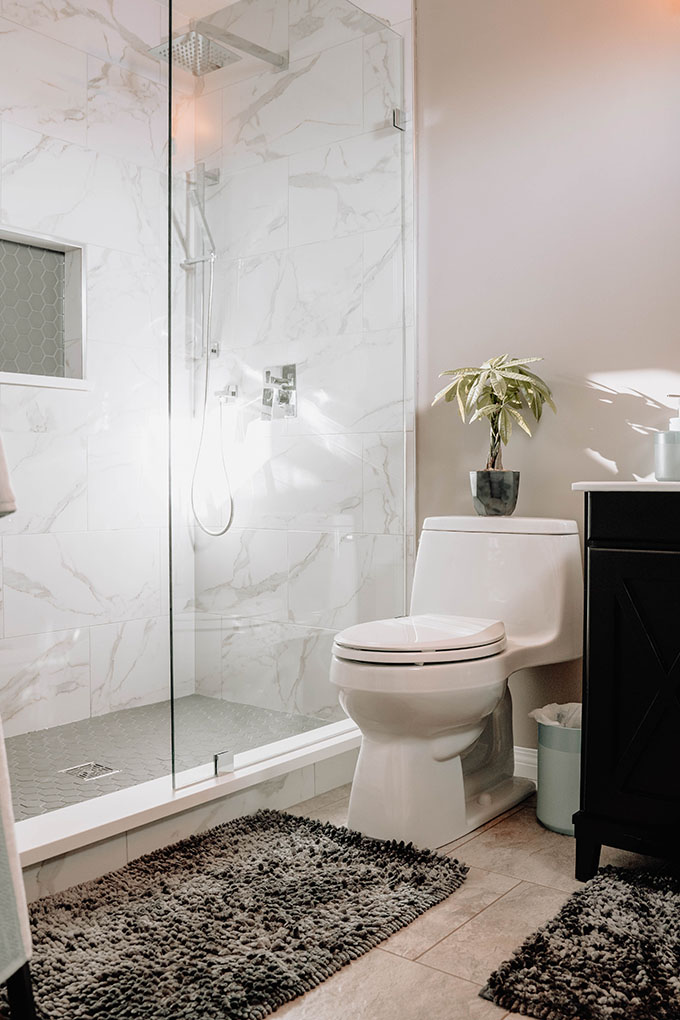
Cultured marble utilizes a blend of stone pieces and resin to simulate the appearance of marble. Depending on the manufacturer and the intention of the product, it can also use a number of pigments and other additives to produce a specific color or style.
Traditional marble has to be mined from a quarry, but cultured marble can be created in a factory using a mold cast. Cultured marble is blended, which means the finished product is non-porous and easy to maintain. Once finished, it’s often added to kitchens and bathrooms for things like countertops, shower walls, backsplashes, bathtubs, and pieces of trim. You can find a range of marble and stone finishes on Archipro.
But is it worth investing in this versatile material?

Advantages of Cultured Marble
Let’s start by examining the advantages of cultured marble:
- Price. Compared to traditional marble, cultured marble is downright cheap. Assuming you’re investing in a countertop or sink with the same specs, you’ll pay a fraction of the cost of traditional marble for cultured marble. Despite this, the appearance is quite attractive—and indistinguishable to the untrained eye.
- A solid surface (with no grout). Cultured marble gives you a solid surface, which is favorable to materials like tile. You won’t have any grout joints to worry about, nor will you encounter any problems with food preparation (which are associated with porous surfaces).
- Customizability. One of the biggest strengths of cultured marble is its sheer customizability. Because you’ll be working with a blended material of particles and resin, you can take advantage of almost any kind of color, style, or pattern. You can replicate the image of traditional marble or go for something more ostentatious. Additionally, you can mold it into almost any shape you want, making it perfect for a wide range of applications in your kitchen and/or bathroom.
- Cleanliness. Cultured marble is also clean and easy to keep clean. Unlike porous materials, you won’t have to worry about trapped bacteria when preparing food. You can keep the material clean with a mild dish soap and a microfiber cloth; just be sure you don’t use an abrasive material or you could ruin the finish.
- Relative durability. Compared to some materials, cultured marble is quite durable. It’s fairly resistant to chipping and abrasions and can withstand pressure. However, it does have some vulnerabilities, as we’ll see in the next section.
- Versatility. Cultured marble is highly versatile. It can be used for countertops, sinks, backsplashes, showers, tubs, trim, and many other features. You can use it for almost anything you can think of in your kitchen and bathroom.
Disadvantages of Cultured Marble
However, there are some drawbacks to consider as well:
- Vulnerability to scratches. Compared to some materials, cultured marble is quite durable—but it’s not indestructible. This type of material is vulnerable to scratches, which can be difficult to repair. An abrasive cleaning product or similarly destructive item can leave semi-permanent scratches in your counter—requiring you to refinish it eventually.
- Comparative weaknesses. Cultured marble isn’t the strongest material on the market. For example, quartz is naturally non-porous and is much more resistant to scratches and heat. It’s also not significantly more expensive than cultured marble, often placing it in a similar budget tier.
- Demand for care. If you want your cultured marble product to last, you’ll need to take good care of it. You’ll have to protect it from extreme temperatures, guard it against scratches, and clean it using the right combination of materials and processes.
- Aesthetic consistency. Cultured marble is created from a collection of miniature particles, and it’s produced by a number of different manufacturers. Accordingly, the aesthetics can be inconsistent. You might have areas where the color is slightly “off” or where the texture appears to deviate from what you intended.
- Susceptibility to staining. Though somewhat stain resistant, cultured marble can stain when it comes in contact with certain types of substances. If you purchase low-quality cultured marble, it might stain from things like toothpaste, juice, and other acidic compounds. Many of these can be cleaned, but not without significant effort.
- Gel cracks with age. Most cultured marble is protected with a durable gel coating, which works well to keep the material in good condition. However, as it ages, this gel can crack. It starts with small, branching cracks, and can eventually extend throughout your material.
- Quality control issues. Different manufacturers have different quality standards. There’s a chance your cultured marble could be structurally weaker or otherwise less reliable than similar products on the market.

Cultured marble isn’t a perfect material; there are some weaknesses that interfere with its usefulness. However, it offers a number of strengths and is much more versatile than many other kitchen and bathroom materials on the market. Weigh your options carefully and review suppliers before making a final decision.




